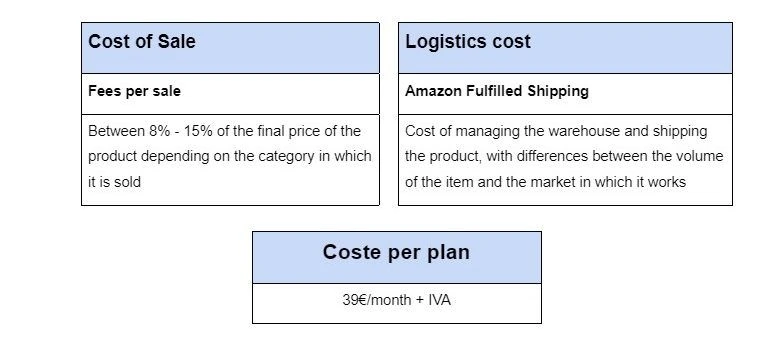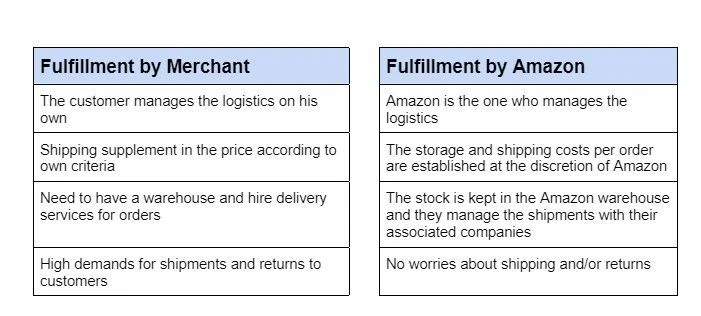“To be the most consumer-focused company in the world, where people can find and discover anything they want to buy.” This is how they describe their vision and mission. And we are all aware that Amazon has not only changed the way we consume, but also the way we live.
But, what are the beginnings of Amazon? It all started with the help of Jeff Bezos in 1994, who began distributing books at home under the name cadabra.com, created under the myth of the great technology companies that we have all seen in the movies, in a garage. What its founder has achieved is to turn Amazon into a universal megastore, promoting a strong purchasing policy from other companies, while at the same time spreading the business in all directions.
Last year, the American multinational, based in Seattle, obtained sales of 469,822 million dollars, 21.7% more compared to the 386,064 million registered in 2020. Currently, Amazon is the third US company with the largest share of the online advertising market, only behind the two big sharks in the sector, Alphabet (Google) and Meta (Facebook).
What is Amazon’s business model based on?
Amazon’s business is based on the Internet and e-commerce, totally focused on the customer with its own logistics system, and in which any person or company, however small or large, can sell their products through a platform 100% optimized and easy to use where you can manage everything related to your account, brand and product. Its evolution as a company has a lot to do with the application of the Long Tail economic model; have an almost infinite supply, long tail, to meet high demand and provide each consumer with the product they are looking for, no matter how minority it may be.
Additionally, to the online world in which Amazon plays a fundamental role, it should be said that this Marketplace has opted for an omnichannel strategy which includes the opening of a network of large physical establishments such as Whole Foods. The intention of this new strategy is to be able to reach a type of customer (high %) that is not interested in buying products online, in addition to creating a loyalty strategy with those who are customers so that they are able to be more close to the company, touching and seeing the products.
Also keep in mind that Amazon now also makes Amazon Web Services available to customers who offer cloud web hosting solutions, providing businesses, non-profit organizations and government agencies with ways to deliver their Low cost web sites and applications.
Finally, and as we all know, since we enjoy them almost daily, Amazon has one of the best streaming services (Amazon Prime Video), and Amazon Music as a music streaming platform.
The great opportunity to sell on Amazon
The growth of Amazon allows all retailers to sell in the world’s main Marketplace, which represents a great opportunity, since it allows them the possibility of expanding and internationalizing their businesses in a simple way, connecting with new clients, in addition to generating a strong visibility.
Those SMEs that decide to enter electronic commerce must choose between doing so with their own online store and adapting to the conditions that this entails (languages, currencies, currency, legislation, etc.) or in the Amazon Marketplaces. Once decided, you must choose what to sell, for example Long Tail niche products to avoid the massive competition that exists in the most popular products.
Although it represents a great advantage for both sellers and buyers, we are facing two great challenges: excessive competition and a drop in prices, which forces us to adapt quickly.
Why sell through Amazon?
Currently, Amazon is visited more than 150 million times a month, has more than 300 million registered buyer accounts and generates more than 100 billion dollars, so it is a good opportunity and way to improve performance. of any electronic commerce. Choosing to sell on Amazon can mean:
- Ability to reach many more potential customers.
- Possibility of international sale.
- Increased brand and/or product visibility.
- Simplicity in opening the account and product management.
- There is no need to have your own e-commerce.
- Possibility of using the Amazon logistics system.
- Advertising inside and outside of Amazon.
Are there any drawbacks?
As in any business, all that glitters is not gold, so Amazon is not perfect and there are some drawbacks to consider:
- High economic cost.
- Great competition.
- Great penalty of negative opinions.
- Rigor in the products for sale.
In which markets is Amazon present?
Currently, Amazon has been experiencing strong growth globally, especially during the pandemic in the 13 countries where it operates, strongly driven by its native country, the United States, where it obtained a rate of over 40%.
Being so, we can currently find it in:
- North America
-
-
- Canada
- USA
- Mexico
-
-
- Europe:
-
-
- UK
- Germany
- France
- Spain
- Italy
- Netherlands
-
- Asia:
-
-
- China
- Japan
- India
-
- Oceania:
-
- Australia
What types of seller accounts are there?
In case you have chosen the retail giant, Amazon, to sell your products and as a platform to boost their sales, you will have to decide if you want to be an individual seller or a Pro seller. In both accounts, Amazon sellers can sell on all five European Marketplace platforms, organize inventory across all of them easily from a single account, and leverage customer trust in Amazon.
- Individual Seller on Amazon
-
- Less than 40 sales per month.
- You pay Amazon only when you sell.
- No subscription fee.
- Only sale of previously existing products on Amazon.
- Limitation of categories.
In short, the individual seller account is geared towards occasional or low-volume sellers, who require little setup.
- Amazon Pro Seller
-
- More than 40 sales per month.
- % commission per sale.
- Monthly rate of €39/ month + VAT.
- Possibility of creating new products on Amazon.
- No category limitation.
Seller vs Vendor
The main difference is who will sell your products. With Amazon Vendor, it is the Amazon team that buys the products and resells them to customers on the platform, while being an Amazon Seller, you sell directly to customers on Amazon.
Vendor vs. Seller Account Benefits
- You don’t have to worry about anything, other than providing the corresponding stock.
- Amazon will place the product ahead of competitors.
- Amazon promotes the brand.
- It provides a great infrastructure and logistics to sell and distribute the product.
Disadvantages of a Vendor vs. Seller account
- Decision to take Vendor into account.
- Amazon manages everything related to the product (price, promotions, etc).
- It does not allow to modify the product file to the taste of the seller.
- Advertising campaigns cannot be carried out.
- It is completely dependent on Amazon.
- Amazon focuses on selling the product but not the brand.
Which costs can we find behind a sale on Amazon?
 What logistics and operational processes does Amazon offer?
What logistics and operational processes does Amazon offer?
As we have been saying throughout the article, there are currently more than 5 million active sellers on Amazon and it seems that the number has no intention of going down. When it comes to fulfilling orders, all sellers will have to make a choice, pay Amazon to take care of everything, or manage it independently.
Product sheet – Key factors to consider
- Title
- Images
- Product key features
- Reviews
- Product category
- Long description and A+ content
The capacity for innovation of the company and of Jeff Bezos himself is beyond any doubt. The secret of its success lies, on the one hand, in the care of the client, whom they put as a priority factor in any procedure. Grow without stopping can be understood as the motto of the company. In a market as segmented as the current one, the Long Tail model of specialization and market niches seems to be a good option or even the way forward for many SMEs in their struggle to survive competition from the big brands.
At Lifting Group, as a strategic consultancy and marketing agency, we help companies exploit the digital channel and lead change and the internal implementation of digital transformation processes. Our marketplaces consulting service focuses on helping our clients not only to identify their strategy in an acquired channel such as Marketplaces, but also to select the most appropriate ones, their markets and the strategy to implement in each of them.








